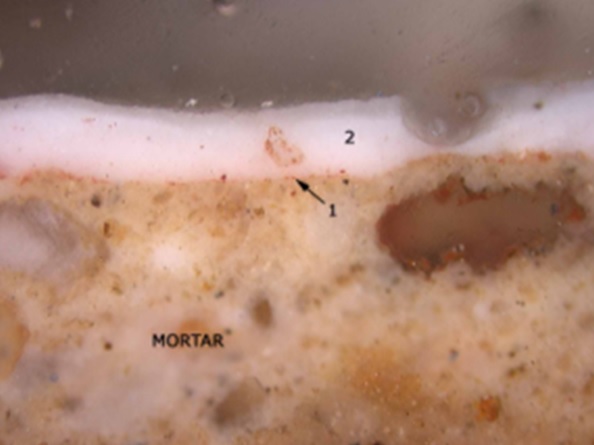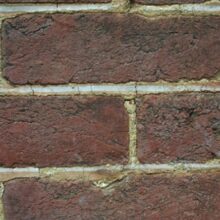Painted Mortar Testing—Morgan's Chapel—Private
We performed an investigation of painted mortar samples from Morgan’s Chapel in Bunker Hill, West Virginia for Gilmore Franzen Architects, Inc. As part of the architect’s investigation they discovered that the mortar joints were “painted” with a thin white line to approximate a narrower mortar joint.
Four samples of the painted mortar joint were removed from the 1852 portion of the chapel and sent to us for analysis to determine general characteristics about the mortar and paint layer. It was also important to determine whether the paint layer was original the circa 1852 brick chapel.
Using a stereo zoom microscope, the samples were examined in cross section to identify the strata of the painted layer. The samples showed a thin and hard translucent pale red coating consisting of crushed red particles directly on top of the mortar. A white line, visible down the center of the mortar joint, was not present on all samples. Samples of the painted mortar were also inspected using infrared micro-spectroscopy (FTIR) to identify the principle components. Sample spectra for both the off-white and pale red coatings were matched to gypsum, silicate, and calcium silicate. No organic binders were found.
Based on the insolubility of the coating, the lack of soiling and erosion of the mortar below the coating, and the availability of the materials, we determined that it was possible that the translucent pale red coating and white painted line were very early, if not original, to the chapel building. This information was provided to the project architect to inform the upcoming restoration work.



